تحميل كتاب أساسيات كيمياء الأطياف Spectroscopy
استكمالاً لقائمة الكتب الكيميائية الرائعة والمختلفة الذي يقوم موقعنا بتوفيرها للأعضاء الكرام ، نقدم لكم اليوم كتاب غاية فى الروعة وهو كتاب أساسيات كيمياء الأطياف Spectroscopy(Introduction to Spectroscopy – Fifth Edition) المجلد الخامس نسخة أصلية بالألوان.
– حيث يعتبر كتاب أساسيات كيمياء الأطياف Spectroscopy من أهم المراجع فى كيمياء الأطياف و يشمل الكتاب ((11 فصل تنوعت مواضيعها مع الأمثلة التوضيحية والتمارين المحلولة وسوف نسردها بالتفصيل في قسم محتويات الكتاب أدناه.
– قام بتأليف هذا الكتاب أربعة من العلماء فى مجال الكيمياء وهم كما يلي:
- Donald L. Pavia
- Gary M. Lampman
- George S. Kriz
- James A. Vyvyan
معلومات عن كتاب أساسيات كيمياء الأطياف Spectroscopy
وإليك أهم المعلومات عن الكتاب كما يلي:
لغة الكتاب : اللغة الإنجليزية
اسم الكتاب: أساسيات كيمياء الأطيافIntroduction to Spectroscopy
تأليف :تم ذكر المؤلفين أعلاه
رقم الطبعة: المجلد الخامس – Fifth Edition
سنة الإصدار: 2013
عدد الفصول: 11
عدد الصفحات: 776
صيغة الملف: pdf
حجم الملف: 27MB
محتويات كتاب أساسيات كيمياء الأطياف Spectroscopy
وفيما يلي عناوين ومحتويات الكتاب كما يلي:
Chapter (1) : Molecular Formulas
1.1 Elemental Analysis and Calculations
1.2 Determination of Molecular Mass
1.3 Molecular Formulas
1.4 Index of Hydrogen Deficiency
1.5 The Rule of Thirteen
1.6 The Nitrogen Rule
Chapter (2) : Infrared Spectroscopy
2.1 The Infrared Absorption Process
2.2 Uses of the Infrared Spectrum
2.3 The Modes of Stretching and Bending
2.4 Bond Properties and Absorption Trends
2.5 The Infrared Spectrometer
A. Dispersive Infrared Spectrometers
B. Fourier Transform Spectrometers
2.6 Preparation of Samples for Infrared Spectroscopy
2.7 What to Look for When Examining Infrared Spectra
2.8 Correlation Charts and Tables
2.9 How to Approach the Analysis of a Spectrum (Or What You Can Tell at a Glance)
2.10 Hydrocarbons: Alkanes, Alkenes, and Alkynes
A. Alkanes
B. Alkenes
C. Alkynes
2.11 Aromatic Rings
2.12 Alcohols and Phenols
2.13 Ethers
2.14 Carbonyl Compounds
A. Factors That Influence the CJO Stretching Vibration
B. Aldehydes
C. Ketones
D. Carboxylic Acids
E. Esters
F. Amides
G. Acid Chlorides
H. Anhydrides
2.15 Amines
2.16 Nitriles, Isocyanates, Isothiocyanates, and Imines
2.17 Nitro Compounds
2.18 Carboxylate Salts, Amine Salts, and Amino Acids
2.19 Sulfur Compounds
2.20 Phosphorus Compounds
2.21 Alkyl and Aryl Halides
2.22 The Background Spectrum
2.23 How to Solve Infrared Spectral Problems
Chapter (3) : Mass Spectrometry
3.1 The Mass Spectrometer: Overview
3.2 Sample Introduction
3.3 Ionization Methods1
A. Electron Ionization (EI)
B. Chemical Ionization (CI)
C. Desorption Ionization Techniques (SIMS, FAB, and MALDI)
D. Electrospray Ionization (ESI)
3.4 Mass Analysis
A. The Magnetic Sector Mass Analyzer
B. Double-Focusing Mass Analyzers
C. Quadrupole Mass Analyzers
D. Time-of-Flight Mass Analyzers
3.5 Detection and Quantitation: The Mass Spectrum
3.6 Determination of Molecular Weight
3.7 Determination of Molecular Formulas
A. Precise Mass Determination
B. Isotope Ratio Data
Chapter (4) : Fragmentation and Structural Analysis
4.1 The Initial Ionization Event
4.2 Fundamental Fragmentation Processes
A. Stevenson’s Rule
B. Radical-Site Initiated Cleavage: α-Cleavage
C. Charge-Site Initiated Cleavage: Inductive Cleavage
D. Two-Bond Cleavage
E. Retro Diels-Alder Cleavage
F. McLafferty Rearrangements
G. Other Cleavage Types
4.3 Fragmentation Patterns of Hydrocarbons
A. Alkanes
B. Cycloalkanes
C. Alkenes
D. Alkynes
E. Aromatic Hydrocarbons
4.4 Fragmentation Patterns of Alcohols, Phenols, and Thiols
4.5 Fragmentation Patterns of Ethers and Sulfides
4.6 Fragmentation Patterns of Carbonyl-Containing Compounds
A. Aldehydes
B. Ketones
C. Esters
D. Carboxylic Acids
4.7 Fragmentation Patterns of Amines
4.8 Fragmentation Patterns of Other Nitrogen Compounds
4.9 Fragmentation Patterns of Alkyl Chlorides and Alkyl Bromides
4.10 Computerized Matching of Spectra with Spectral Libraries
4.11 Strategic Approach to Analyzing Mass Spectra and Solving Problems
4.12 How to Solve Mass Spectral Problems
Chapter (5) : Nuclear Magnetic Resonance Spectroscopy: Basic Concepts
5.1 Nuclear Spin States
5.2 Nuclear Magnetic Moments
5.3 Absorption of Energy
5.4 The Mechanism of Absorption (Resonance)
5.5 Population Densities of Nuclear Spin States
5.6 The Chemical Shift and Shielding
5.7 The Nuclear Magnetic Resonance Spectrometer
A. The Continuous-Wave (CW) Instrument
B. The Pulsed Fourier Transform (FT) Instrument
5.8 Chemical Equivalence—A Brief Overview
5.9 Integrals and Integration
5.10 Chemical Environment and Chemical Shift
5.11 Local Diamagnetic Shielding
A. Electronegativity Effects
B. Hybridization Effects
C. Acidic and Exchangeable Protons; Hydrogen Bonding
5.12 Magnetic Anisotropy
5.13 Spin–Spin Splitting (n +1) Rule
5.14 The Origin of Spin–Spin Splitting
5.15 The Ethyl Group (CH3CH2–)
5.16 Pascal’s Triangle
5.17 The Coupling Constant
5.18 A Comparison of NMR Spectra at Low- and High-Field Strengths
5.19 Survey of Typical 1H NMR Absorptions by Type of Compound
A. Alkanes
B. Alkenes
C. Aromatic Compounds
D. Alkynes
E. Alkyl Halides
F. Alcohols
G. Ethers
H. Amines
I. Nitriles
J. Aldehydes
K. Ketones
L. Esters
M. Carboxylic Acids
N. Amides
O. Nitroalkanes
5.20 How to Solve NMR Spectra Problems
Chapter (6) : Carbon-13 Spectra, Including Heteronuclear Coupling with Other Nuclei
6.1 The Carbon-13 Nucleus 290
6.2 Carbon-13 Chemical Shifts 291
A. Correlation Charts 291
B. Calculation of 13C Chemical Shifts
6.3 Proton-Coupled 13C Spectra—Spin–Spin Splitting of Carbon-13 Signals
6.4 Proton-Decoupled 13C Spectra
6.5 Nuclear Overhauser Enhancement (NOE)
6.6 Cross-Polarization: Origin of the Nuclear Overhauser Effect
6.7 Problems with Integration in 13C Spectra
6.8 Molecular Relaxation Processes
6.9 Off-Resonance Decoupling
6.10 A Quick Dip into DEPT 305
6.11 Some Sample Spectra—Equivalent Carbons
6.12 Non-Equivalent Carbon Atoms
6.13 Compounds with Aromatic Rings
6.14 Carbon-13 NMR Solvents — Heteronuclear Coupling of Carbon to Deuterium
6.15 Heteronuclear Coupling of Carbon-13 to Fluorine-19
6.16 Heteronuclear Coupling of Carbon-13 to Phosphorus-31
6.17 Carbon and Proton NMR: How to Solve a Structure Problem
Chapter (7) : Spin–Spin Coupling
7.1 Coupling Constants: Symbols
7.2 Coupling Constants: The Mechanism of Coupling
A. One-Bond Couplings (1J)
B. Two-Bond Couplings (2J)
C. Three-Bond Couplings (3J)
D. Long-Range Couplings (4J–nJ)
7.3 Magnetic Equivalence
7.4 Spectra of Diastereotopic Systems
A. Diastereotopic Hydrogens: Ethyl 3-Hydroxybutanoate
B. Diastereotopic Hydrogens: The Diels-Alder Adduct of Anthracene-9-methanol and N-Methylmaleimide
C. Diastereotopic Hydrogens: 4-Methyl-2-pentanol
D. Diastereotopic Methyl Groups: 4-Methyl-2-pentanol
7.5 Nonequivalence within a Group — The Use of Tree Diagrams
when the n + 1 Rule Fails
7.6 Measuring Coupling Constants from First-Order Spectra
A. Simple Multiplets—One Value of J (One Coupling) 380
B. Is the n + 1 Rule Ever Really Obeyed?
C. More Complex Multiplets—More Than One Value of J
7.7 Second-Order Spectra—Strong Coupling
A. First-Order and Second-Order Spectra
B. Spin System Notation
C. The A2, AB, and AX Spin Systems
D. The AB2 . . . AX2 and A2B2 . . . A2X2 Spin Systems
E. Simulation of Spectra
F. The Absence of Second-Order Effects at Higher Field
G. Deceptively Simple Spectra
7.8 Alkenes
7.9 Measuring Coupling Constants—Analysis of an Allylic System
7.10 Aromatic Compounds—Substituted Benzene Rings
A. Monosubstituted Rings
B. para-Disubstituted Rings
C. Other Substitution
7.11 Coupling in Heteroaromatic Systems
7.12 Heteronuclear Coupling of 1H to 19F and 31P
A. 1H to 19F Couplings
B. 1H to 31P Couplings
7.13 How to Solve Problems Involving Coupling Constant Analysis
Chapter (8) : Other Topics In One-Dimensional NMR
8.1 Protons on Oxygen: Alcohols
8.2 Exchange in Water and D2O
A. Acid/Water and Alcohol/Water Mixtures
B. Deuterium Exchange
C. Peak Broadening Due to Exchange
8.3 Other Types of Exchange: Tautomerism
8.4 Protons on Nitrogen: Amines
8.5 Protons on Nitrogen: Quadrupole Broadening and Decoupling
8.6 Amides
8.7 Solvent Effects
8.8 Chemical Shift Reagents
8.9 Chiral Resolving Agents
8.10 Determining Absolute and Relative Configuration via NMR
A. Determining Absolute Configuration
B. Determining Relative Configuration
8.11 Nuclear Overhauser Effect Difference Spectra
8.12 How to Solve Problems Involving Advanced 1-D Methods
Advanced NMR TechniquesChapter (9) :
9.1 Pulse Sequences
9.2 Pulse Widths, Spins, and Magnetization Vectors
9.3 Pulsed Field Gradients
9.4 The DEPT Experiment: Number of Protons Attached to 13C Atoms
9.5 Determining the Number of Attached Hydrogens
A. Methine Carbons (CH)
B. Methylene Carbons (CH2)
C. Methyl Carbons (CH3)
D. Quaternary Carbons (C)
E. The Final Result 526
9.6 Introduction to Two-Dimensional Spectroscopic Methods
9.7 The COSY Technique: 1H-1H Correlations
A. An Overview of the COSY Experiment
B. How to Read COSY Spectra
9.8 The HETCOR Technique: 1H-13C Correlations
A. An Overview of the HETCOR Experiment
B. How to Read HETCOR Spectra
9.9 Inverse Detection Methods
9.10 The NOESY Experiment
9.11 Magnetic Resonance Imaging
9.12 Solving a Structural Problem Using Combined 1-D and 2-D Techniques
A. Index of Hydrogen Deficiency and Infrared Spectrum
B. Carbon-13 NMR Spectrum
C. DEPT Spectrum
D. Proton NMR Spectrum
E. COSY NMR Spectrum
F. HETCOR (HSQC) NMR Spectrum
Chapter (10) : Ultraviolet Spectroscopy
10.1 The Nature of Electronic Excitations
10.2 The Origin of UV Band Structure
10.3 Principles of Absorption Spectroscopy
10.4 Instrumentation
10.5 Presentation of Spectra
10.6 Solvents
10.7 What Is a Chromophore?
10.8 The Effect of Conjugation
10.9 The Effect of Conjugation on Alkenes
10.10 The Woodward–Fieser Rules for Dienes
10.11 Carbonyl Compounds; Enones
10.12 Woodward’s Rules for Enones
10.13 Unsaturated Aldehydes, Acids, and Esters
10.14 Aromatic Compounds
A. Substituents with Unshared Electrons
B. Substituents Capable of Conjugation
C. Electron-Releasing and Electron-Withdrawing Effects
D. Disubstituted Benzene Derivatives
E. Polynuclear Aromatic Hydrocarbons and Heterocyclic Compounds
10.15 Model Compound Studies
10.16 Visible Spectra: Color in Compounds
10.17 What to Look for in an Ultraviolet Spectrum: A Practical Guide
Chapter (11) : Combined Structure Problems
Example 1
Example2
Example 3
Example 4
Problems
صورة غلاف كتاب أساسيات كيمياء الأطياف Spectroscopy
طريقة تحميل كتاب أساسيات كيمياء الأطياف Spectroscopy
ملحوظة: من الأفضل قراءة الفهرس (موجود في أول الكتاب) حتى تحصل على فكرة عامة عن المحتويات قبل قراءته ، والآن أتمنى لكم قراءة ممتعة.
– كل ما عليك فعله لتحميل الكتاب هو الضغط على كلمة (تحميل الكتاب). وسيتم توجيهك مباشرة لصفحة تحميل الكتاب.
– إذا لم يتم توجيهك لصفحة تحميل الكتاب مباشرة أو أن الرابط لا يعمل، فقط قم بإبلاغنا في التعليقات عن ذلك وسنقوم خلال 24 ساعة بحل المشكلة.
– إذا أردت كتاباَ معيناً في أي فرع من فروع علم الكيمياء. فقم بالدخول إلى قسم اتصل بنا وأرسل لنا أيميل فيه صورة الكتاب أو اسمه. وأن شاء الله تعالى نعمل على توفيره لك مجاناً أو مدفوعاً حسب رغبة المالك الأصلي للحفاظ على حقوق الطبع والنشر إذا أمكن ذلك.
– كما يمكنك تحميل العديد من الكتب الكيميائية والمحاضرات والدورات المتعلقة بالكيمياء. وذلك بالذهاب إلى الصفحة الرئيسية قسم (كتب كيميائية) أو عبر الرابط التالي: كتب كيميائية.



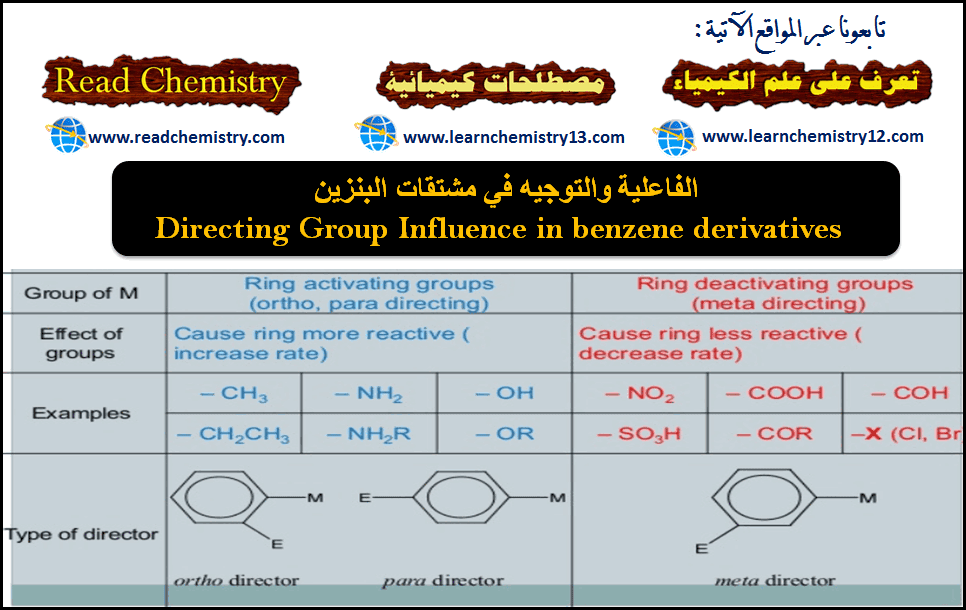
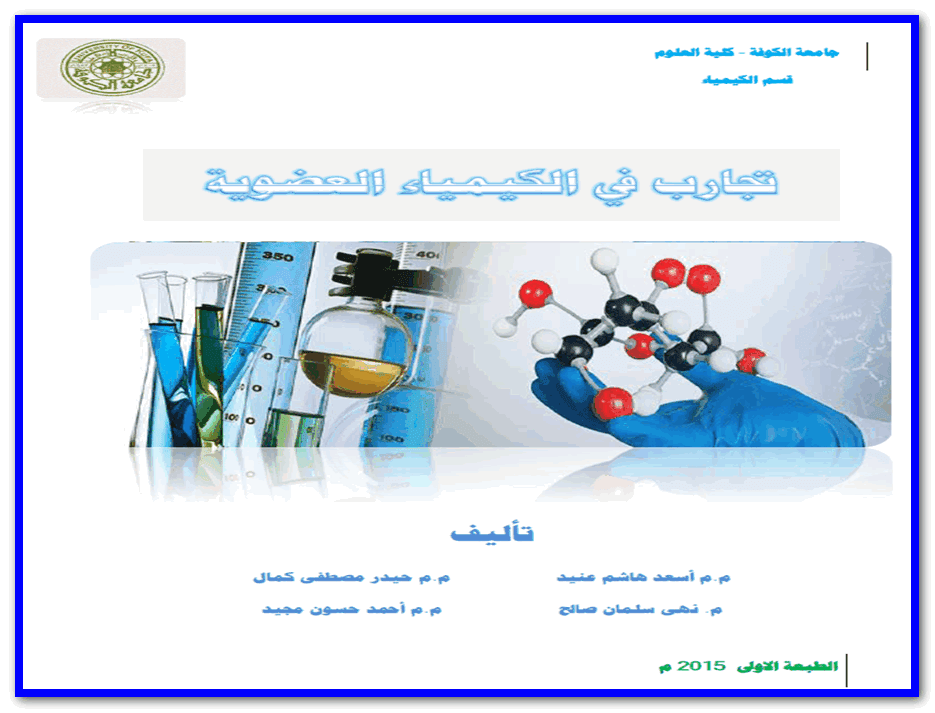
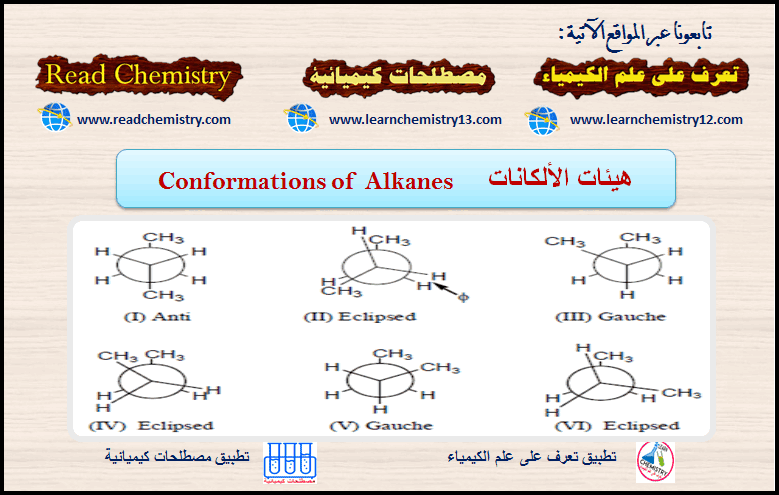
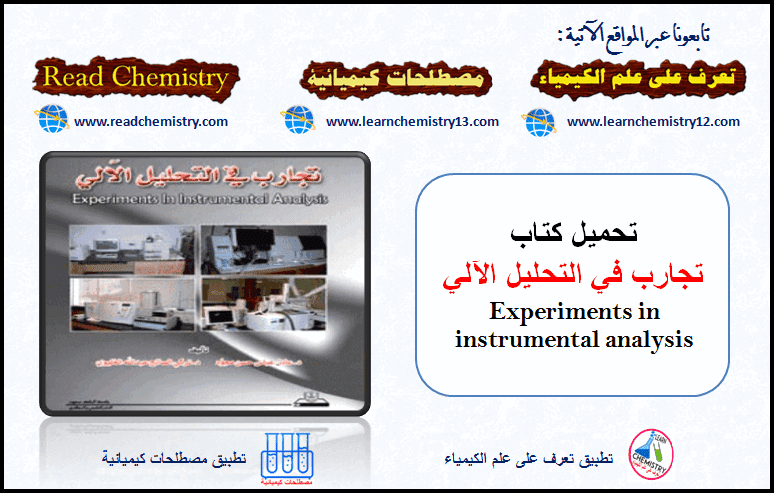
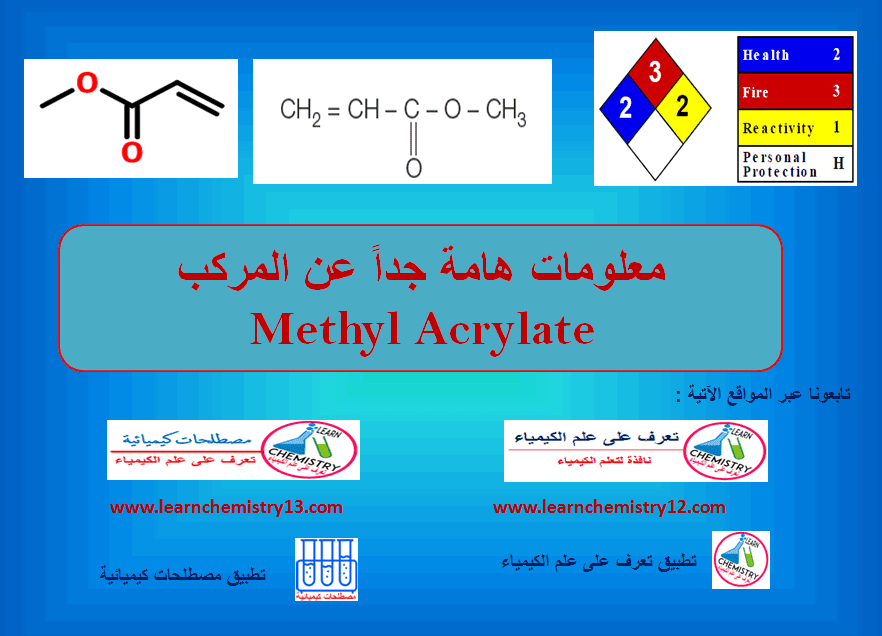
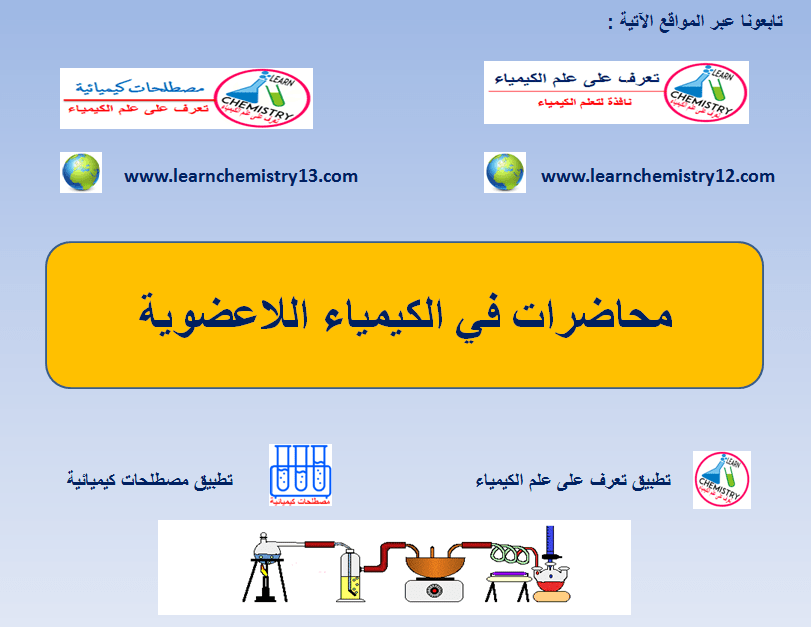
السلام عليكم ورحمة الله وبركاته، بارك الله في ما تقدموه لنا من نفع في الكتب، والله استفدنا اكثر…اريد من سيادتكم كتاب في الاطياف بالعربي Spectroscopie